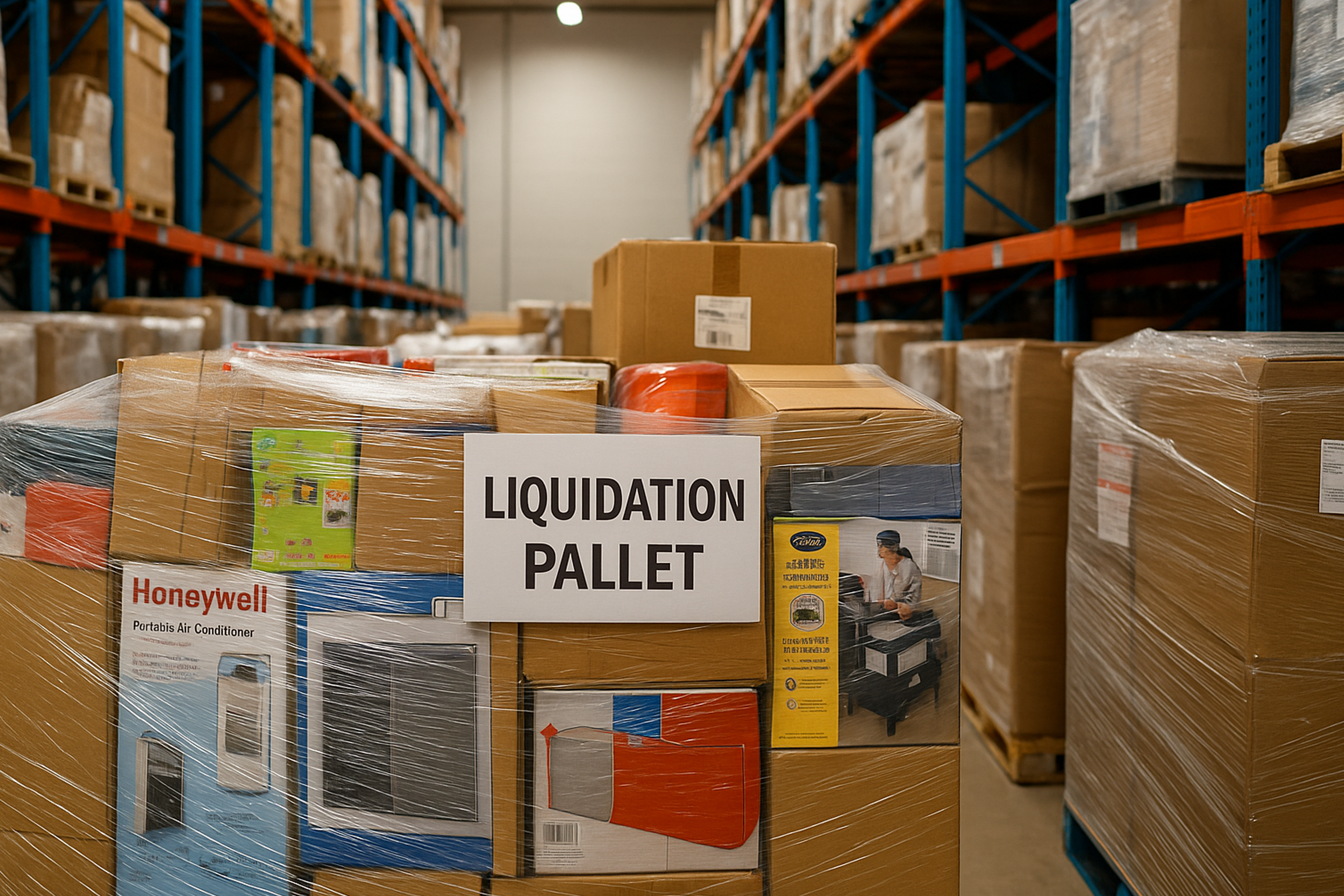If you’re trying to make money online by flipping cheap inventory, it’s easy to fall down the liquidation rabbit hole. Search for sourcing ideas, and one phrase keeps popping up: liquidation pallets. The promise sounds great; truckloads of brand-name products at pennies on the dollar. But what you get can range from a little gold to a lot of garbage.
Let’s be clear from the start. Liquidation pallets are not all created equal. Some contain legit, brand-new closeout products. Others are filled with damaged customer returns, broken electronics, and half-used cosmetics. If you don’t know what you’re buying, your business is going to bleed cash fast.
The only time liquidation pallets make sense is when the pallet is made up of true closeout inventory; not returns, not salvage, not shelf pulls. Closeouts are unsold, brand-new merchandise that’s being cleared out because of overstock, packaging changes, or discontinued SKUs. That’s what you want. If the pallet includes a random mix of new and used goods, pass. You’re not running a junk shop.
Why Sellers Get Burned on Liquidation Pallets
Most people jump into liquidation pallets thinking they’re going to strike gold. That’s because the marketing makes it sound easy. “Buy cheap. Resell high.” What they don’t tell you is that most of these pallets are a gamble. You don’t know what’s inside until it shows up. By then, it’s too late.
Some pallets are labeled as “general merchandise,” which can mean absolutely anything. Others include items returned to big-box stores, often in used or broken condition. If you list that stuff on eBay or Amazon and the customer complains, you’re the one eating the refund.
What you actually want are closeout liquidation pallets; pallets made up entirely of new, unopened, unsold products. These exist, but they’re not usually advertised with flashy graphics and vague descriptions. You find them by working with legit closeout dealers who specialize in retail-ready inventory. These suppliers know you’re a reseller. They want your repeat business. They’ll tell you exactly what you’re buying.
Why Liquidation Pallets Make the Most Sense on eBay
Here’s where liquidation pallets can be useful: low-margin platforms like eBay. Profit margins are razor thin on eBay, and consistent inventory is nearly impossible without deep buying power. That’s where cheap pallets come in. You can flip small batches of low-cost goods quickly, make a little money, and move on.
eBay shoppers are used to listings that disappear. They don’t expect you to restock the same items over and over. So if you buy a liquidation pallet of closeout tools or toys and sell them off in a week, no problem. Once it’s gone, it’s gone. That fits the model.
But don’t confuse “low-cost” with “high-profit.” You’re likely squeezing out a few bucks per item, not building a brand. That’s why your margins need to start high, and that only happens if the pallet is made up of clean, closeout goods. If half the shipment is junk, your profits are gone before your first listing goes live.
Why Liquidation Pallets Fail on Amazon or Your Website
Amazon and branded websites are a completely different story. These platforms demand consistent, replenishable inventory. You’re building product pages that are meant to rank, convert, and stay live long-term. You can’t do that with one-off liquidation deals.
If you run out of stock quickly on Amazon, your listings tank. If your website constantly shows sold-out or discontinued items, customers stop coming back. Buying liquidation pallets for these platforms is a fast way to lose traction and credibility.
Even worse, if your pallet includes uninspected returns or questionable items and you try to sell them on Amazon, you risk suspension. That’s not theory. That’s reality. Amazon holds you to a higher standard, and so do your customers. There’s no room for guesswork.
If you want to run a serious Amazon business or a trusted online store, you need product lines you can reorder, rank for, and promote with confidence. Liquidation pallets full of random items do not fit that strategy.
How to Source Liquidation Pallets the Right Way
If you still want to try liquidation pallets, you’ve got to be selective. Here’s what to look for:
- Only buy from trusted closeout dealers who specialize in new, shelf-ready products.
- Ask if the pallet contains closeouts only. If it’s a mix of returns, walk away.
- Request manifests when possible. You want to know exactly what’s inside.
- Buy in small quantities first. Test before you commit.
- Focus on items that fit your selling platform. Don’t load up on apparel if your buyers want tools.
You’ll also want to attend trade shows or industry expos where real suppliers exhibit. These dealers don’t usually blast ads on social media. They work with professional sellers and want long-term relationships. That’s where you find the good stuff.
If you want to do this much more easily, Worldwide Brands lists trusted suppliers who deal in liquidation pallets.
Final Thoughts on Liquidation Pallets
Liquidation pallets can be part of a smart sourcing strategy if you use them for the right platform and buy the right kind. They make the most sense for eBay sellers trying to squeeze a few dollars out of a low-margin environment. But they are not a good fit for Amazon or your ecommerce website, where consistency matters more than short-term savings.
If you decide to explore this route, stick to legit closeouts. Avoid the mixed-condition messes. Your goal isn’t to gamble. Your goal is to build a business.
Buy smarter. Source cleaner. And never trust a pallet you can’t verify.

